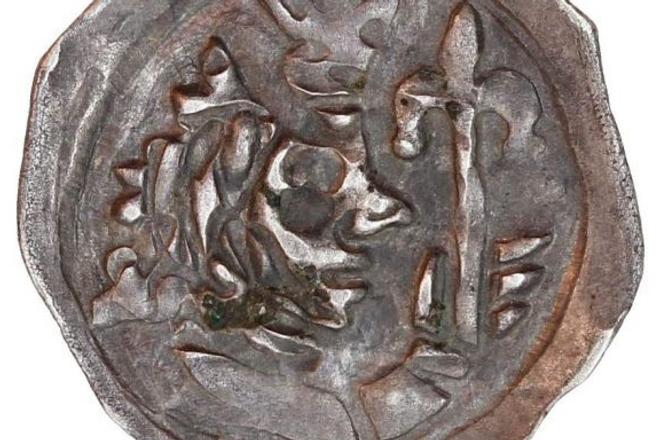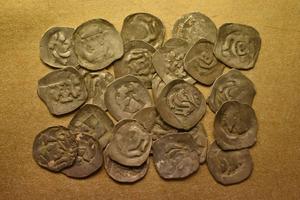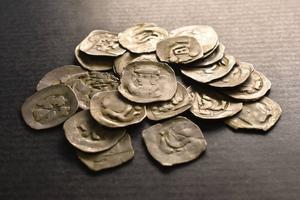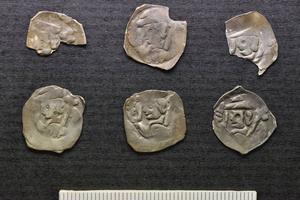During the detailed numismatic analysis of the hoard of coins found near Piešťany in 2020, one coin was discovered, the mintage of which had not been known in Slovakia until now, the Regional Monuments Board (KPÚ) in Trnava said on its website.
The coin is a pfennig, bearing the bust of a crowned monarch with a lily-shaped scepter embossed on the obverse side and a walking four-legged animal, probably a lamb, on the reverse.
This is a 'problematic' coin that has not yet been accurately classified. It first came from the city of Nuremberg and can be roughly dated to the 13th century. In older literature, it was included among the Nuremberg coins of Ludwig IV (1314-1347); but as shown by this treasure, buried in the ground just after 1306, this is wrong dating. In the latest works on Nuremberg coinage, the pfennig was not even included among the Nuremberg mints.
The treasure from Piešťany consists of 147 silver coins from the reign of Přemysl Otakar II (1251-1276) to Frederick the Fair (Friedrich I Habsburg) as duke (1306-1314), which a tourist found in the forest.
According to the period the coins were hidden, they are probably related to the conflict between Karol I Róbert of Anjou and Matúš Čák Trenčiansky. Currently, a study on the find has been submitted to the editors of the Slovak archaeological magazine.
During the period of existence of KPÚ Trnava (since 2002) this is the second announced random coin depot. The first was a find in Kostolné Kračany in 2016 while digging a pit for a swimming pool. It contained at least 345 silver coins, mostly kreutzers and tolars, from the years 1624 to 1704. The finder first handed over 312 coins; archaeologists discovered another 18 coins while examining the site, and in 2020 the police handed over 15 coins the finder had hidden to the KPÚ Trnava. A monographic treatment of the treasure is currently being prepared.


 (source: KPÚ Trnava)
(source: KPÚ Trnava)


